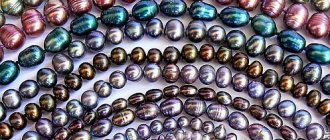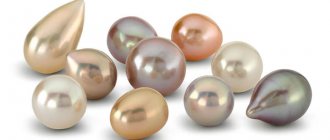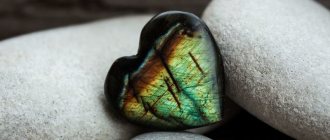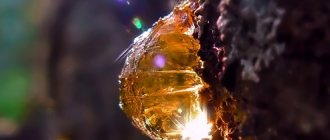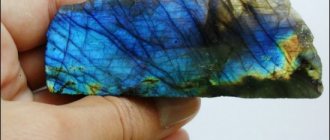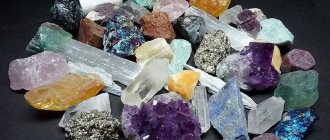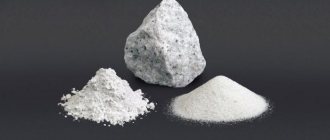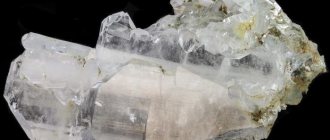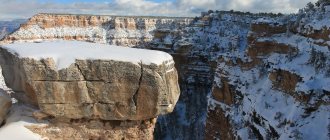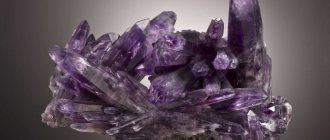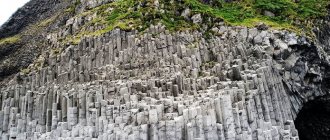If you love intellectual relaxation, then you probably do crossword puzzles or scanword puzzles in your spare time. Of course, this is a very exciting activity that allows you to expand your horizons and demonstrate your erudition.
Just how often have you encountered a situation where you need to guess, for example, a 6-letter word that you have no idea about? Most likely, you will remember more than one such case when, due to such an unfortunate misunderstanding, another scanword puzzle remained incompletely solved. But now you have a unique assistant - the Crossopen.ru !
Answers to scanwords on VKontakte, Odnoklassniki and many others
What is our service?
It will replace you with many dictionaries, encyclopedias and well-read relatives with whom you previously consulted if you were unable to find the right word on your own. With Crossopen.ru you can easily solve a crossword puzzle of any difficulty level using an intuitive search form.
The main advantage of our service is a huge database of words and questions for which you can find the appropriate answer. A user-friendly interface will provide you with a quick search for words of 3, 4, 5 or more letters . It is important to note that at the same time you can clarify your request by indicating the subject, as well as the letters you already know - the so-called word search by mask .
Let's look at the interface using a clear example: you need to find out the poet's last name, which has 6 letters, and the third is “sh”. You set up a search for 6-letter words, click on the corresponding empty cell and insert the letter you know, after which you specify the keyword - “poet”. As a result, you get various options, one of which is sure to be correct. This way you can find any answers to crossword puzzles , because it’s very simple!
You can solve any crossword puzzle!
Our service is absolutely free, and you can freely use it to search for answers to any crossword or scanword puzzle, both from the newspaper and on the Internet. For example, our database contains almost all the answers to Odnoklassniki and VKontakte crossword puzzles, which will allow you to solve them quickly and with pleasure.
Plus, you can create these kinds of brain teasers yourself! To do this, just list the words in alphabetical order and choose the options that suit you with descriptions so that the resulting crossword puzzle is interesting and educational.
So if you like to solve crosswords, the Crossopen.ru will become a convenient and reliable assistant for you. Spend your free time doing your favorite activity with pleasure!
These Amazing Minerals
VERMICULITE
The tale of the Great Snake in the masterful interpretation of Pavel Bazhov, and other references to a huge snake, supposedly indicating a gold deposit, are based on the superstitions of the ancient Khanty and Mansi, Ural legends and signs of miners and ore miners. The conviction of local residents that a wondrous treasure is hidden in the mountain, but that some otherworldly forces are guarding it, is what served as the folklore basis for Bazhov’s wonderful tales.
But there is also a scientific explanation for the existence of the Great Snake. The mineral vermiculite is a scaly clay mica of golden-yellow or bronze-yellow color, which is quite widespread in the Urals and Siberia. Vermiculite has an interesting property: when heated, it swells greatly.
Pieces of vermiculite, placed in a fire, swell up and resemble golden Christmas balls, amazingly beautiful and light. Unfortunately, heated vermiculite is not stable - just a light touch or even a gust of wind is enough, and the ball crumbles into tiny flakes, literally turning into dust.
Lamellar vermiculite sometimes, during the swelling process, takes the shape not of a ball, but of a large (20-30 times larger than before heating) wriggling column (worm, snake). During this process, a slight crackling sound can be heard. Now let’s imagine how a Mansi hunter, sitting in the remote Siberian taiga near a fire, sees: right out of the fire, wriggling, a huge snake crawls out with a crash.
Here, probably, even a modern tourist would feel uneasy. And if later placer or native gold was found not far from this terrible place (and it is known to be found in Siberia and the Urals), then, most likely, such a fact was surrounded by legends and superstitions.
POISONOUS CINBOAR
At the beginning of the 19th century, a young Russian artist died under unclear circumstances in the Aktash tract in the Altai Mountains. Delusional, incoherent speech, convulsions, epileptic seizures - these are the symptoms of the disease that preceded death. The oral cavity of the deceased was a strange copper-red color...
The paintings remaining after the artist’s death suggested a serious mental illness of their creator. The opinion of the mountaineers, the local residents, was unanimous: the deceased had visited a place forbidden to mortals - the Lake of Mountain Spirits. And the spirits took revenge on the daredevil.
A hundred years later, the wonderful geologist, paleontologist, ethnographer and writer Ivan Efremov visited these regions. He learned about the death of the artist and about the spirits, the forces of evil, guarding the lake. Then, still a young writer, he carefully studied all these messages, in fact, already legends of the past century, and then took a trip to the forbidden area. Soon Efremov published a short story about this lake and the tragically deceased artist. The story was published in a collection dedicated to adventure and fantasy, and therefore was not taken seriously by specialists. But in vain.
In the area of the Aktash Basin, powerful thermal phenomena are observed, and the rocks themselves consist of the mineral cinnabar . Cinnabar, a frighteningly red mineral, contains up to 86% mercury. Heated by the summer sun from above and hot springs from below, cinnabar begins to release mercury in the form of vapor (in chemistry this phenomenon is called sublimation).
Then the mercury vapor condenses and settles in spots of a heavy silver-lead color. The accumulation of these spots was mistaken for the mysterious Lake of Mountain Spirits. Everything else is the poisonous effect of mercury vapor on the human body.
During the Middle Ages and late 1700s, being sent to work in Spanish mines containing cinnabar formations was considered practically a death sentence. Cinnabar was widely used in Chinese history to make decorative dishes for food, and pieces of it were also used to create intricately shaped carvings, sometimes at the cost of the lives of artisans. What's even more incredible is that some of the ancient doctors believed that cinnabar contained healing properties and prescribed it to treat certain diseases.
OIL... IN STONE
Geodes —crystalline mineral nodules with a cavity in the center—are highly prized by rock collectors because they often contain quite beautiful formations inside.
But whatever crystals are found in the cores of the gray geodes, they are eclipsed by a second component: fetid globules of crude oil and tar. Oil-bearing geodes, of course, have no economic significance. But they baffle geologists, who are not yet able to explain this mineralogical phenomenon.
Geodes are formed by minerals that crystallize in closed cavities of rock. They grow inward, and their hollow core is thought to be hermetically sealed from the environment. Oil and tar, for their part, are formed from organic matter at high pressures and temperatures.
But, as geology teaches, these two processes do not occur simultaneously. But, nevertheless, geodes still exist. It was they, according to scientists, who collected and contained oil from the environment.
FLEXIBLE STONES
Although stones are usually considered a symbol of unbending hardness, some rocks are nevertheless so malleable that a thin strip cut from them bends under its own weight.
The most common of these stones is a certain type of sandstone called itacolumite . Its name comes from Italocumí, a mountain in Brazil where this stone is found in large quantities. It is also found in the Ural Mountains and India.
It is believed that the stones bend due to the cavities present between the sand grains. It is this structure that allows italocumite to exhibit a special flexibility, not typical of most stones.
CRYSTAL CROSSES
A stone cross growing from the ground was noticed by the population of the Belarusian city of Turov a long time ago. No one remembers when exactly. At first we noticed a small boulder and tried to lift it, but couldn’t. They left the stone alone. A few years later, it was discovered that it had risen several centimeters above the ground and had the outline of a cross, unusual for a simple field stone.
Of course, the amazing stone attracted the attention of Orthodox people, who saw in it a supernatural sign. And soon the Borisovoglebsk cemetery became a place of pilgrimage.
However, there is nothing unusual about the Turov stone. The fact is that the opaque, reddish mineral staurolite takes on the shape of a cross. And if it were not for the tendency of the crystals of this mineral to take on cruciform shapes, non-specialists would hardly have paid attention to it.
Similar stones can be found in many places. And wherever they were found, legends followed them everywhere. So, in the north-west of France they say that these stones fell from heaven. In the US state of Virginia they are called witch stones.
The name of the mineral comes from the Greek word “stavros”, that is, “cross”.
JEWISH STONE
In the century before last in the Urals, in the Ilmen Mountains, one of the scientists discovered a mysterious stone. On a relatively smooth slab the size of a plate, he saw mysterious writing. The inscription on the stone was surprisingly similar to the Hebrew one. Individual letters were easily guessed. They could even be put into syllables.
Did Jews really inhabit the Urals in the distant past? Science has established with indisputable accuracy that ancient Hebrew tribes inhabited Syria, Babylon and other areas of the Middle East. Scientists thought they had made a great discovery. Only, however, it was not possible to decipher the inscription on the stone. Some squiggles looked like letters, but most of them didn't look like anything.
The news about the discovery of scientists in the Urals became known to many. Attempts to decipher the mysterious writings did not stop, although they did not give the desired result.
But then another miracle happened: many, many stones with “ancient Hebrew” inscriptions were found in the Urals. On some these inscriptions were written in large print, on others - in surprisingly small, beady handwriting. But neither one nor the other could be deciphered.
Chemical scientists examined the stones in the laboratory. Its composition was granite. The stone came to be called "written granite" (scientific name graphic pegmatite ) due to the clear inscriptions on it. It is also called the Jewish stone, since everyone seems to think that the writing on it is of Hebrew origin.
The answer to written granite was given not by philologists, not by chemists, but by mineralogists. Academician Alexander Evgenievich Fersman examined the strange stone very carefully. He, like other scientists, was initially struck by the fact that the mysterious inscriptions were applied not only to the surface of the stone, but also went deep into it. And if written granite is cut, the writing will be equally visible on both the top and bottom sides.
To learn the secret of written granite, we had to go deep not only into those distant times when the ancient Hebrew tribes lived, but also into those prehistoric eras when the process of formation of the earth took place and when molten magma pierced the earth's thickness here and there.
It was then that quartz probably played its trick. It penetrated into the mass of light and greenish feldspar in millions of thin dark gray streams and froze together with the feldspar. If you now cut the written granite along the frozen streams of gray quartz, these streams will look like sticks as thick as a match or a pencil. And with a transverse fault, streams of quartz look like letters of the Hebrew alphabet. And what’s surprising: often these letters appear in even lines, as if they were actually drawn by a human hand!
The mystery of quartz has been solved. But even now people look with unflagging curiosity at the amazing “writings” of the so-called Jewish stone.
PERLITE - FLOATING STONE
It turns out that there are stones in nature that do not sink in water. This is perlite, a heavy volcanic glass. But it acquires its unusual properties after it is heated over fire. After this, it becomes like a loose gray mass, reminiscent of frozen foam.
The word "pearl" means pearl. Perlite really does look like pearls. Its color is bluish-gray with a fine silvery tint.
This stone is found where volcanoes have been active for a very long time. It was the hot lava of the volcanoes that fused the sand lying on the surface into huge blocks. In Buryatia, for example, a layer of perlite thirty meters thick was found. This layer of “pearl stone” lies shallow, but stretches for tens of kilometers. The hot lava of a long-vanished volcano spread so widely here.
Of course, it’s interesting to throw a piece of perlite into the fire and watch how the heat begins to crack and swell like dough. Intense heat causes perlite to increase in volume ten to fifteen times. Pieces of it really become so light that they don’t sink.
TEMPORARY MINERALS
In deserts you can sometimes see amazing sights. This is how the famous Soviet scientist Academician A.E. Fersman describes it:
“Here in the wild conditions of the Karakum Desert I had to encounter an absolutely fantastic appearance of salts. After a heavy overnight rain, the next morning the clayey surfaces of the shores are suddenly covered with a continuous snow cover of salts - they grow in the form of twigs, needles and films, rustling underfoot... But this continues only until noon - a hot desert wind rises, and its gusts scatter the salt flowers for several hours.”
However, the most wonderful stone flowers appear in the polar regions. Let us turn again to A.E. Fersman.
“Here, over the course of six cold months,” writes the academician, “mineralogist P. L. Dravert observed remarkable formations in the salt brines of Yakutia. In cold salt springs, the temperature of which dropped 25 degrees below zero, large hexagonal crystals of the rare mineral hydrohalite appeared on the walls. By spring they crumbled into the powder of simple table salt, and by winter they began to grow again.”
It turns out that there are minerals in nature that can change their appearance within just one year. They are called periodic.
MOSS MINERALS
Sometimes, when splitting layered rocks, mineralogists find special formations in them, called dendrites for their external resemblance to plants. They are a collection of the thinnest and most delicate twigs: yellow, red or black. They often come in several tones at the same time, and seem to grow from one root.
Copper dendrites
This special type of minerals is formed either in very narrow cracks between two layers of rock, or in a not yet completely fossilized environment of a jelly-like substance into which ferrous solutions have fallen.
In the famous “moss agates” of India, such branches of green, brown and red substances form entire complex and intricate forests, thickets of herbs, bushes, and trees. Now we know that they were formed because the agate substance once, during the solidification of the molten lavas of India, was a liquid mass in which the growth of these dendrites took place.
